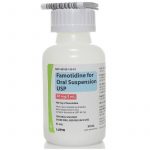
Contents
How to Reduce Acidity in Coffee?
When brewing coffee, nine main acids are released, giving your coffee its unique flavor. Reduce acidity by choosing a darker roast, brewing longer, using a coffee filter, and employing other methods.
Coffee has humble beginnings but is now a universally appreciated beverage. If you love coffee but have concerns about its acidity, this article will address them.
Read on to learn about coffee’s acidic properties, the health effects, and how to lower its acidity.
You can measure acidity using a pH scale, which ranges from 0 to 14. Coffee typically has a pH of 4.85 to 5.10, indicating its acidic nature.
Coffee contains over 30 different acids. When brewing, nine main acids are released, contributing to the coffee’s unique flavor.
The nine acids found in coffee, listed in order of concentration, are: palmitic acid, linoleic acid, phosphoric acid, malic acid, lactic acid, acetic acid, citric acid, quinic acid, and chlorogenic acid.
Chlorogenic acid provides antioxidant properties, while quinic acid contributes to coffee’s smell and taste, including its sour aftertaste.
What Affects Coffee’s Acidity?
Various factors affect the acidity levels in coffee:
Grind: Fineness of the coffee particles influences the acidity. Finely ground coffee extracts more acid compared to coarsely ground coffee.
Roast: The duration and temperature of roasting impact acidity. Darker roasts have lower acidity than lighter roasts, as they release less chlorogenic acid.
Brewing method: Longer brewing times result in less acidity. Cold brew coffee is also less acidic than hot brews because it releases fewer acids.
While coffee is generally well-tolerated, it can worsen gastrointestinal conditions like ulcers, acid reflux, and irritable bowel syndrome.
How to Make Low-Acid Coffee
Here are ways to reduce the acidity in your coffee:
1. Brew longer: Longer brew times reduce acidity.
2. Choose darker roasts: Darker roasts are less acidic than lighter ones.
3. Try cold brew coffee: Cold brew coffee has less acidity due to its slow extraction rate.
4. Add eggshells to your grind: Eggshells neutralize acids during brewing.
5. Don’t store hot coffee for long periods: High temperatures increase acid release over time.
6. Use a coffee filter: Use paper filters or mesh bags to reduce acidity and the risk of heart disease.
7. Choose coarser grinds: Coarser grinds slow down the extraction rate, resulting in less acidity.
8. Add milk: Plant-based milks can balance the pH and reduce acidity.
9. Avoid overheating: High brewing temperatures release more acids.
10. Use hard water: High mineral content in hard water neutralizes acidity.
11. Choose low-acid coffee beans: Certain varieties, like espresso or chicory blends, are less acidic.
12. Add acid reducers: Commercially available reducers or additives can counteract acidity.
QUESTION
Bottom Line
While coffee is acidic, it can be enjoyed with certain adjustments. Opt for darker roasts, longer brew times, and coarser grinds to reduce acidity. Alternatively, consider using acid reducers or low-acid coffee beans. Make small changes to continue enjoying your coffee without the negative effects of acidity.
Sources:
- "Dietary guideline adherence for gastroesophageal reflux disease." – BMC Gastroenterology
- "Why Does Coffee Bother My Stomach?" – Cleveland Clinic
- "Strength behavior of alkaline activated eggshell powder and flyash geopolymer cured at ambient temperature." – Construction and Building Materials
- "Acids in coffee: A review of sensory measurements and meta-analysis of chemical composition." – Critical Reviews in Food Science and Nutrition
- "Is coffee a colonic stimulant?" – European Journal of Gastroenterology & Hepatology
- "Filtered, not unfiltered, coffee in cardiovascular disease." – European Journal of Preventive Cardiology
- "Effect of coffee on distal colon function." – Gut
- "Role of roasting conditions in the level of chlorogenic acid content in coffee beans: correlation with coffee acidity." – Journal of Agricultural and Food Chemistry
- "Determination of chlorogenic acids and caffeine in homemade brewed coffee prepared under various conditions." – Journal of Chromatography. B, Analytical Technologies in the Biomedical and Life Sciences
- "Plant-based milk alternatives an emerging segment of functional beverages: a review." – Journal of Food Science and Technology
- "PubChem Compound Summary for CID 516892, Sodium bicarbonate." – National Center for Biotechnology Information
- "No association of coffee consumption with gastric ulcer, duodenal ulcer, reflux esophagitis, and non-erosive reflux disease: a cross-sectional study of 8,013 healthy subjects in Japan." – PloS One
- "Definition of pH scales, standard reference values, measurement of pH and related terminology." – Pure and Applied Chemistry
- "Acidity and Antioxidant Activity of Cold Brew Coffee," "Effect of grinding, extraction time and type of coffee on the physicochemical and flavour characteristics of cold brew coffee." – Scientific Reports
- "Alkalinity and Hardness." – Utah State University


